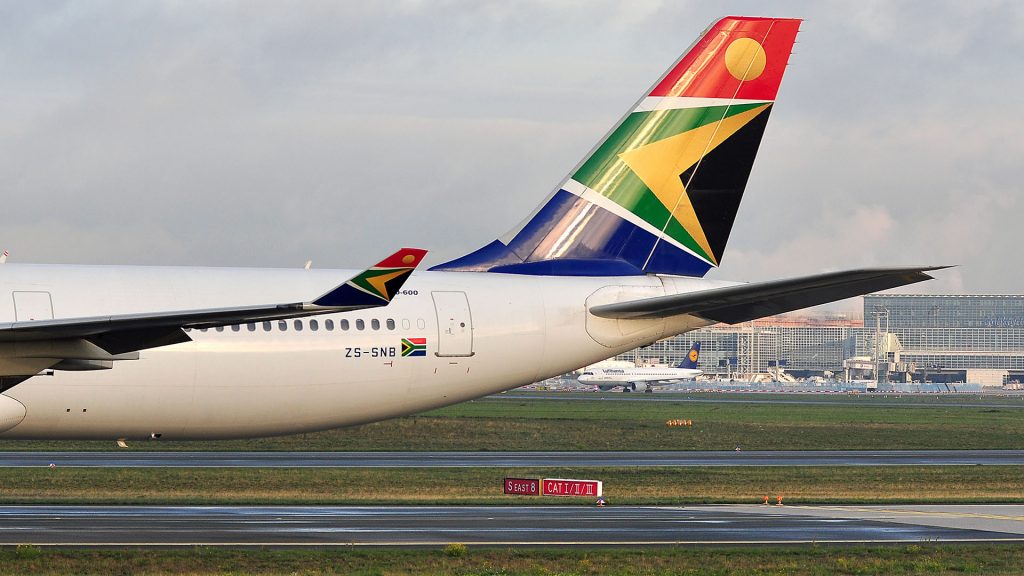Key Takeaway
State-owned South African Airlines is facing turbulent times, announcing coming layoffs while requesting an infusion of funds from the state. Their financial situation, however, could reach beyond the troubled company to impact political candidates and the country’s credit score. Their online breadcrumbs leave behind clues as to their strategy for rising out of debt.
Following the breadcrumbs
South African Airways announced this week that it would be laying off 118 members of its catering unit.
Layoffs, while major indicators of financial trouble, also point to areas where a company is deciding to focus – or relinquish – its resources. It’s an indicator of how the brand is approaching a strategy to rid itself of debt.
The announcement follows a series of varying attempts to remain solvent, from offering up surplus cabin and crew members to other global carriers, to getting rid of underperforming routes, to moving aircraft to its low cost arm Mango, to government bailouts and continued appeals to the National Treasury as a shareholder for cash injections.
In May, the company was able to secure $400M in cash from the South African government following a plea from SAA Chief Executive Vuyani Jarana when he mentioned layoffs on their staff of 10,000 would be “inevitable.”
In his latest statement, Jarana claims further cuts will be ‘unavoidable.’ Reuters reports that “two sources familiar with his plan said the state-owned carrier was likely to cut between 1,000 and 1,500 people via a combination of layoffs and voluntary redundancies to bring its employee-per-aircraft ratio in line with regional competitors.”
The brand announced potential bankruptcy back in 2017, when Parliament received reports of the firm “hemorrhaging cash” and in dire need of a government bailout. From rife corruption, to poorly negotiated contracts, to underpaid and often striking staff, a number of factors have contributed to the airline’s demise, and its inability to break even.
Customers are taking note, with satisfaction levels for the airline falling blow its competitors in May following Jarana’s plea. Meanwhile, Ethiopian Airlines, who has overtaken SAA as the biggest airline by revenue and profit, remains favorable.

Leading indicators
Due to its dependency on government funding, the dilemma at SAA is uniquely positioned to impact the country as a whole. Current South African President Cyril Ramaphosa is making plans to wean the brand off of its dependency on the state, but in doing so may put the nation’s credit score at risk while creating unrest due to the brand’s coming layoffs.
The implications of SAA’s financial issues are far-reaching, now impacting the African National Congress. As more routes are cancelled and staff unloaded, everyone from politicians to major global and African airlines should be following the breadcrumbs closely in order to predict the airline’s next steps.
As a whole, the airline industry in Africa is facing a number of struggles. A low point occurred in 2014 during which African airlines lost $900M and continued at about a $100M loss per year since. Continued competition on global routes and pressure from low cost airlines continues to chip away at profits on the continent.
According to Reuters, “Africa is the weakest region of all, with airlines struggling to improve load factors – percentage of seats filled – from the world’s lowest level of 61.5 percent in 2018, compared with 81.7 percent globally, according to International Air Transport Association forecasts.”
But there appears to be hope in state-owned Ethiopian Airways as they continue to expand and look to compete on a global scale, taking advantage of their position on the continent as a travel hub. Comparatively, despite carrying roughly the same number of passengers annually – around 10 million – Ethiopian Airlines makes more than $200 million annual profit while SAA suffered a hefty $400 million loss in 2017. Moving forward, Ethiopian will be the African Airline to watch.

